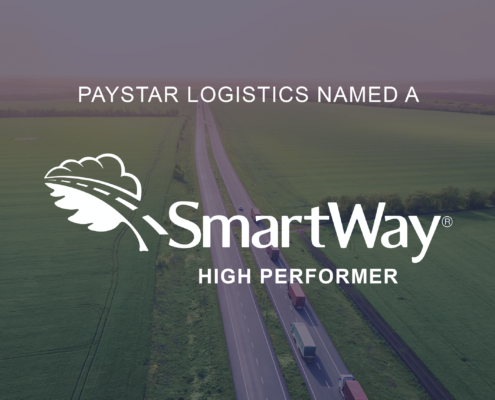
Impacts of Inflation on Transportation & Trucking Industries
When most people think of inflation, they think about rising prices at the grocery store or gas pump. However, inflation has a far-reaching impact on our economy and society as a whole. The increase in prices and costs over time has a huge impact on many industries, but none more so than the transportation and trucking industries. Here are some insights on how inflation affects consumers and businesses across industries and supply chains.
How Inflation Impacts the Trucking Industry
In the trucking industry, inflation can lead to higher fuel costs, which can eat into profits and make it difficult for trucking companies to compete. In addition, inflation can lead to higher prices for new trucks and trailers, as well as other equipment and parts. This can put a strain on trucking companies’ budgets and make it difficult to expand or modernize their fleets.
Inflation can also lead drive higher wages for truck drivers, as companies attempt to attract and retain drivers in a tight labor market. These higher costs can eventually be passed on to consumers in the form of higher prices for goods and services.
Inflation and shipping capacity
And in some cases, the impacts of rising costs are felt as shipping delays. As the cost of transportation increases, and the labor market tightens shipping delays can often arise as transportation providers struggle to meet market demand and maintain capacity at cost.
How Inflation Impacts the Supply Chain
Inflation can also have an impact on supply chains. For example, if the cost of transportation increases due to inflation, then the price of goods that need to be transported will also increase. This can lead to disruptions in supply chains and delays in the delivery of goods. In addition, inflation can lead to currency fluctuations, which can make it difficult for companies to predict costs. These factors can all lead to higher prices for consumers.
Inflation can also have an impact on supply chains, making it difficult for companies to predict costs and leading to disruptions in the delivery of goods. Despite all of these impacts, inflation is a normal part of our economy and occurs when the demand for goods and services outpaces the supply.
Adjusting Supply Chains for Inflation
As businesses work to combat rising costs in the market place, the supply chain is a place that many manufacturers and product managers look to reduce cost centers.
There are a few ways that companies can adjust their supply chains to account for inflation:
Long-term contracts: By locking in prices for long-term contracts, businesses can avoid the fluctuations in costs that come with inflation.
Supply chain visibility: Having visibility into the entire supply chain can help businesses identify areas where costs are rising and take action to mitigate those increases.
Lean manufacturing: Lean manufacturing techniques can help businesses reduce waste and increase efficiency, which can help offset some of the cost increases that come with inflation.
Impacts of Inflation on the Consumer
Ultimately, many of the impacts of inflation across the supply chain are felt by the end consumer. In some cases, wages may not keep up with inflation, which can lead to a decrease in purchasing power and a decrease in the standard of living. But, Inflation’s indirect impact is also felt by consumers. For example, if the cost of transportation increases due to inflation, then the price of goods that need to be transported will also increase. This can lead to increased costs for everything from food to clothing to gasoline.
In the marketplace, inflation can lead to higher interest rates. This can discourage investment and spending, as businesses and consumers alike become more cautious with their money. Inflation can also lead to lower levels of productivity, as companies are forced to spend more on inputs that have become more expensive. This can lead to slower economic growth and higher unemployment.
The Bottom Line
Inflation is a complex economic phenomenon with far-reaching impacts. It can lead to higher prices for consumers, lower levels of productivity, and disruptions in supply chains. Working to optimize supply chains and create the right solutions for transportation and distribution can help supply chains minimize the impacts of inflation and reduce the burden passed to the end consumer.
At Paystar, our goal is to create win-win-win transportation solutions by carefully matching the right carrier to the right lane opportunities from our clients helping to improve freight flow and build sustainable capacity across our logistics networks. If you’re looking for true 3PL partnership, we’d love to meet you. Get in touch
MORE ARTICLES

Spear Phishing in the Transportation Sector: What is it and How to Protect Yourself
While the transportation and logistics industry isn’t new to experiencing coordinated “cyber attacks”, cybercriminals are constantly iterating on their methods of infiltration. Just this year, several top IT firms have identified a sharp increase in costly security breaches that all follow a similar pattern. In this pattern, the primary attack vector is a method known…

Why We’re Committed to the SmartWay program
Paystar Logistics is proud to announce our recent designation as a SmartWay High Performer. As a SmartWay Partner, we join the EPA in their quest to build a more efficient, productive, and sustainable freight industry.

A Look at the U.S. Truck Driver Shortage in 2021
A truck driver shortage is nothing new to the U.S. In fact, according to a 2019 analysis report by the ATA (American Trucking Association), we have struggled with truck driver shortages for the past 17 years. This was first recognized in 2005 when we were short, roughly 20,000 drivers to fulfill shipping demands. However, by the end of 2018, that number rose to…

